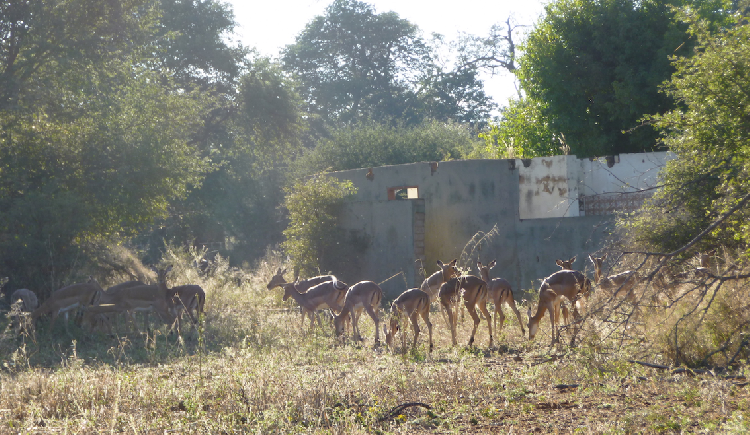By: Luregn Lenggenhager (University of Basel)
Originally Published 19 February 2016 [LINK TO ORIGINAL]
In 1963, the then South African administration proclaimed the entire Western Caprivi as a nature park, by far the earliest nature conservation area in northern Namibia.
This was just one moment in a century-long history of conflict over the use and control of the Western Caprivi (which today forms part of the Okavango East and Zambezi regions).
Through the history of this narrow strip, many central aspects of South Africa’s military and civil occupation of northern Namibia – as well as local resistance to it – can be traced.
Before the proclamation, the area was described by the native commissioner in Rundu as a “useless strip of land”. He tried to keep the cost of its administration as low as possible and even weighed giving it back to the British.
Not only was the strip seen as “useless”, it was also seen as posing a danger to white farmers in central Namibia because of the potential spread of cattle diseases in the strip.
As a result, in 1937 the South Africans ordered everyone living in Western Caprivi to move out and to take their cattle with them. Only a few people – those who relied primarily on cultivation, hunting and gathering veldkos – were allowed to remain – mostly Khwe-speaking people.
In the 1960s, when anti-colonial resistance was growing in Namibia and neighbouring countries, the Western Caprivi became strategically valuable in terms of securing South Africa’s northern territories and borders.
Discussions about the region’s future reflected three key planks of South Africa’s strategy for northern Namibia at the time: to keep military control of the land, its people and the borders; to extract as many (labour) resources as possible; and finally to portray its occupation as support for the people.
The proclamation of the nature reserve supported these aims.
In 1966, the ecologist KL Tinley wrote an extensive report on the potential value of Western Caprivi, attributing a high ecological value to the area.
He made it clear that the area had to be kept as state land for security and veterinary reasons. The plan was to keep the land “open” for possible “profit-making” after Namibia’s northern regions were secured, pacified and incorporated into South Africa.
Towards this end, the population was kept to a minimum and became strongly controlled. South Africa’s policies towards the ‘Khwe’ shifted from violent coercion to an attempt to ‘befriend’ and ‘protect’ them for the sake of science, or (later) tourism, and to win their loyalty.
Hunters And Heritage
The nature reserve was subsequently officially upgraded into the Caprivi Game Park and stricter hunting regulations were introduced.
But by 1970, the South African Defence Force (SADF) had turned the entire area into a closed military zone, hindering further conservation measures by the civil administration.
The SADF built several military bases to fight the growing resistance towards their occupation and to have a launch-pad for attacks into Zambia and Angola.
It was in Western Caprivi that many of the infamous paramilitary groups (Koevoet) and military special units (Buffalo Battalion) were based and trained.
The new hunting laws, combined with a strong military presence and stricter control of the borders, resulted in restrictions being slapped on population movement.
This had serious consequences: it was no longer possible for people to collect enough veldkos or to hunt enough meat.

One former hunter described it as the moment when “we felt, for the first time, that there was no future for us”. Many people in the region, as well as people who had fled from southern Angola, were resettled and had to take jobs at the camps or even in the military to survive.
Even if these jobs paid comparably well, it made the workers and soldiers completely dependent on their occupiers.
In addition, the SADF shot large numbers of wildlife and were heavily involved in the ivory and rhino horn trade. But when the decline in wildlife numbers became obvious, people living in the area were blamed.
This led to stricter prosecution of alleged poachers and the deployment of nature conservation officers at every base.
The hunter mentioned above recalled that the SADF would arrest you just for “being known as a good hunter”. In turn, this came in handy for the SADF seeking to portray itself as “saving the natural heritage of the Caprivi”. In some cases, it resulted in local resistance against hunting regulations.
After independence, the new government kept Western Caprivi as a nature conservation area and in 2007 it was re-proclaimed as the Bwabwata National Park (together with the Mahango Park).
It is the only Namibian national park in which people are allowed to live.
The re-proclamation of the park – after nearly a century of conflict and control – spawned hope among inhabitants that they would finally be able to profit from their rich wildlife resources.
For some this might come true in the near future – through tourism and hunting concessions. At present, though, the area remains one of the poorest in Namibia.
